No, you don’t necessarily need to see your patients in person to provide great care

Marie-Laure Bry
Deputy Medical Director, France
Asynchronous care
Asynchronous medicine describes care in which there is no continuous real-time interaction between the patient and the provider or between providers. Examples of asynchronous methods include video and audio recordings, the exchange of medical images, bio signal collection, emails, text messages and instant messaging. In essence, almost everything except physical or video visits.
From crowded to optimized
The best way to describe the benefits of asynchronous medicine for a doctor is to compare a physical waiting room and a telemedicine platform.
Picture a doctor's office: magazines scattered around, medical supplies somewhere, care sheets somewhere else, the medical assistant struggling to give an estimate of the waiting time to the patient who has been sitting around for 45min because you are held up with another patient. And here you are at your desk relentlessly filling an EHR so old you could auction it, double click after double click to prescribe paracetamol for the 15th time today. Your day goes by in 20min time slots, and each inevitable delay has an exponential impact on the next patient.

Enters asynchronous care. Your time slots now vary according to patient care needs, your antique EHR has been replaced by a shiny new best friend filled with endless pre-built templates for care protocols, prescriptions, referrals, lab orders, health questionnaires to collect patients’ medical history prior to the encounter … Your patients no longer have to sit through delays in what can be an anxiety-inducing waiting room but are communicating with you from the comfort of their home. Those age-old magazines have been replaced with personalized, educational content.
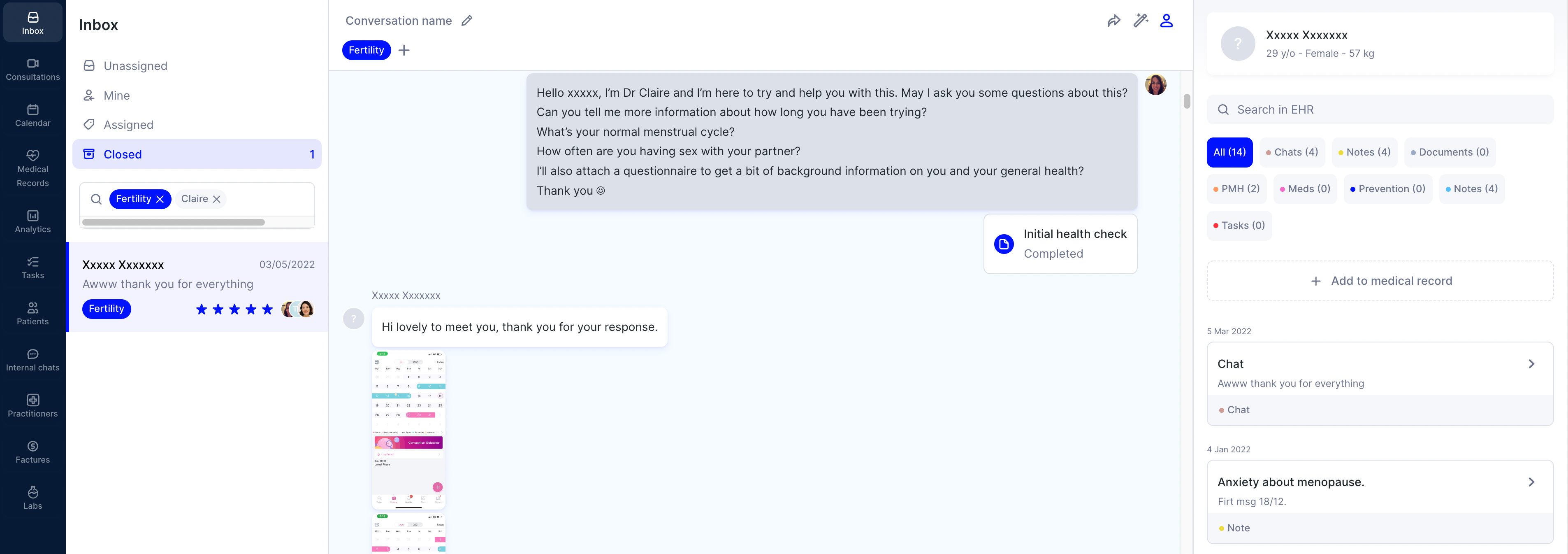
Of course, doctors cannot provide asynchronous care through their phone the way they would text a friend on WhatsApp. They need proper tools to make sure no patient information gets lost in the process. Digital health platforms such as Nabla must be built specifically to serve as a foolproof care manager, helping doctors keep track of patients, not simply now, but at all times, while complying with data privacy requirements.
Asynchronous care improves communication between patients and doctors
Asynchronous medicine is not intended to erase the human aspect of the patient-physician relationship. Actually, it is totally adapted and has a lot to bring to medical interactions. When a patient is sick - or anxious at the thought of being sick - and constrained by the inherent time limit of a encounter, having an orderly, clear conversation with their doctor can be difficult. Oral conversations - especially under stress and interspersed with medical terms - are not structured. Patients need time to articulate how and what they feel, and they also need time to process your answers and comments. A verbal chat is not necessarily adapted to such a context. This is especially true for intimate issues that one might feel uncomfortable talking about.
Asynchronous care allows you to give structured sets of answers to patients’ concerns. One question equals one answer, no complaint goes unsolved and the patient keeps everything in writing. Who doesn’t have a family member who came home from a medical visit remembering only half of what the doctor said? Asynchronous care is a way for your patient to understand and remember every piece of information.
Asynchronous care creates efficiency gains that translate into a more empathetic relationship
Beyond the optimization of communications between patients and doctors, asynchronous care undeniably translates into efficiency gains. It allows for greater flexibility and better management of your time: you can answer a patient’s text in between two encounters, simultaneously manage several patients with different health issues, and organize your workflow according to the degree of priority of each patient case. From voice memos to automated encounter reports and speech-to-text functionalities, asynchronous care features are designed to keep you fully focused on care. These efficiency gains allow you to lessen your administrative burden and to be able to focus your energy and whole attention on the reason why you became a doctor in the first place: caring for your patients.
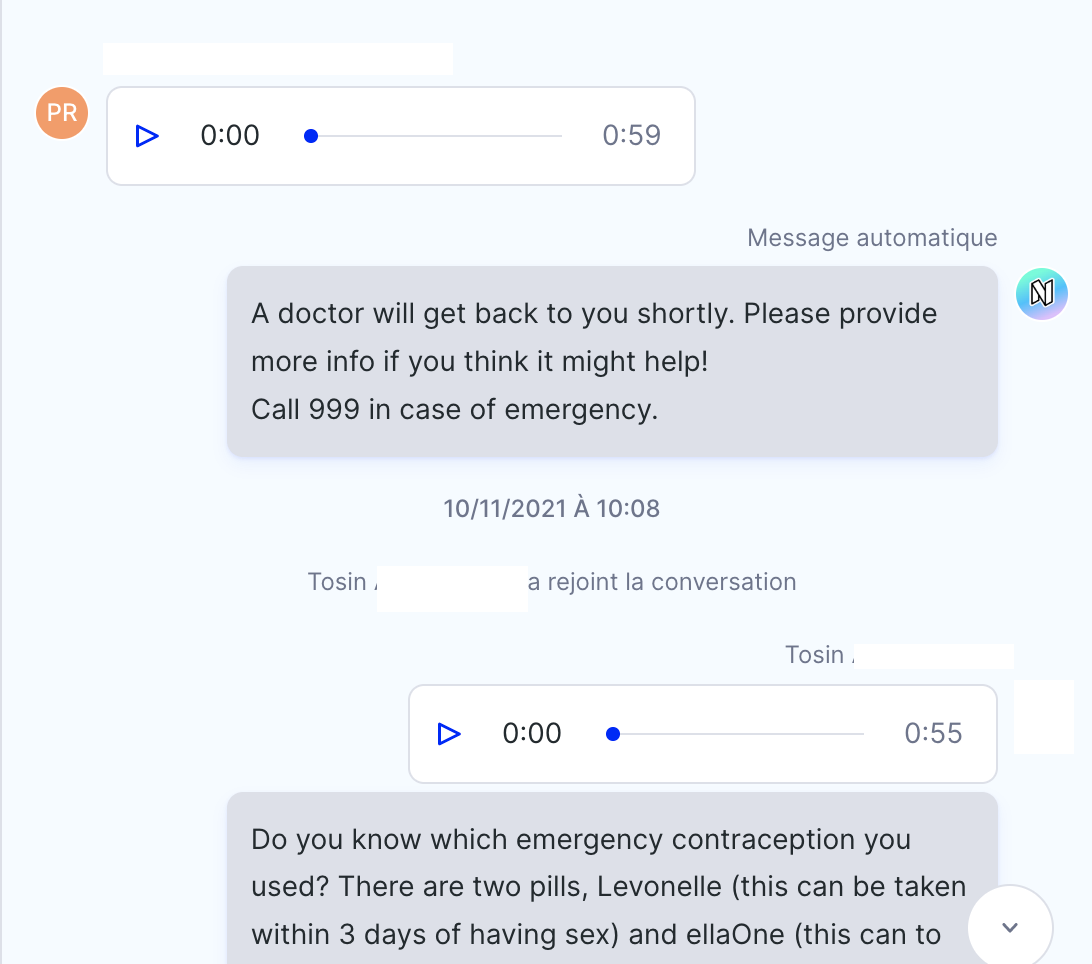
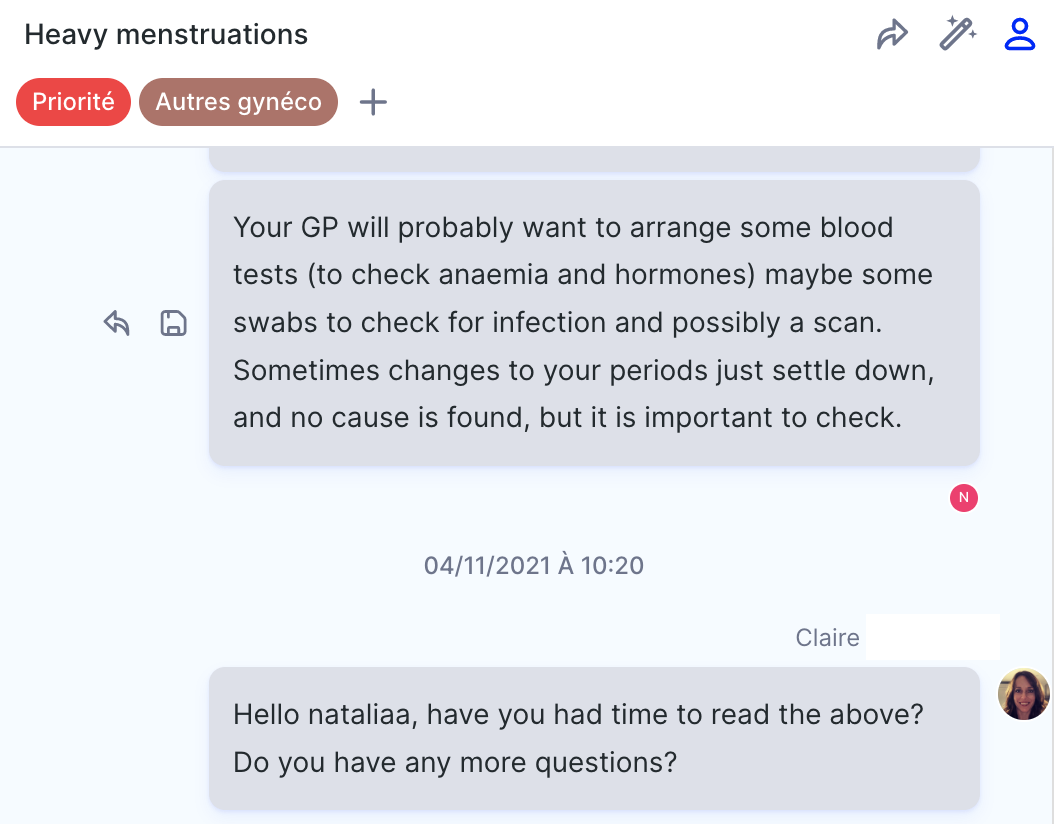
Asynchronous care makes it easy to follow up on patients, which is something “traditional” professionals are poorly incentivized to do as it would basically amount to opening Pandora’s box and not be compensated for it. Plus, getting a message saying, "Hi Julie, I'm checking in. How are you feeling?" makes for a delightful and empathetic patient experience. Your patients want to feel like you are thinking about them, and that you are caring for them, in every sense of the word.
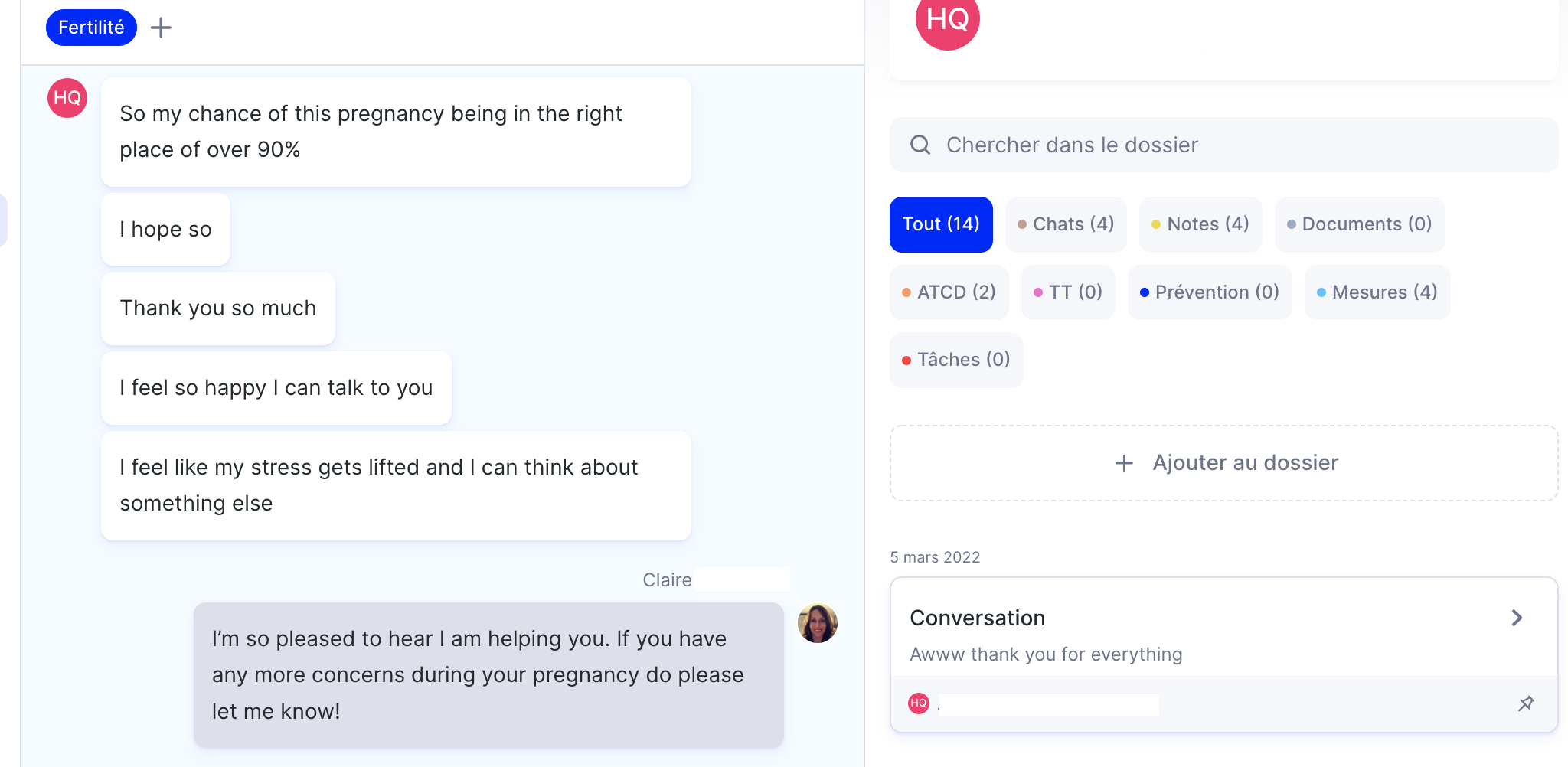
Asynchronous care promotes organic collaboration and holistic treatment plans
Asynchronous care fosters collaboration between professionals. Patients do not always need an in-person visit but sometimes require a specialist to give specific insights on their condition. In this case, asynchronous care serves as a best practice. In a traditional setting, you would need to plan more in-person encounters for your patient - one with the specialist you are referring them to and one follow-up visit with you.
In an asynchronous setting, both you and the specialist have access to a patient’s medical information and may discuss with the patient in a unified thread, which is commonly known as tele-expertise. As such, asynchronous care allows for holistic care involving a patient’s entire care team in an organic manner. Even more so, technologies such as Nabla’s use machine learning to capture past messages from healthcare professionals in order to suggest the most relevant response to the professional currently working on a patient’s case. Inter-practitioner threads and exchanges are also a great way to share and get updated on topics outside your area of expertise.
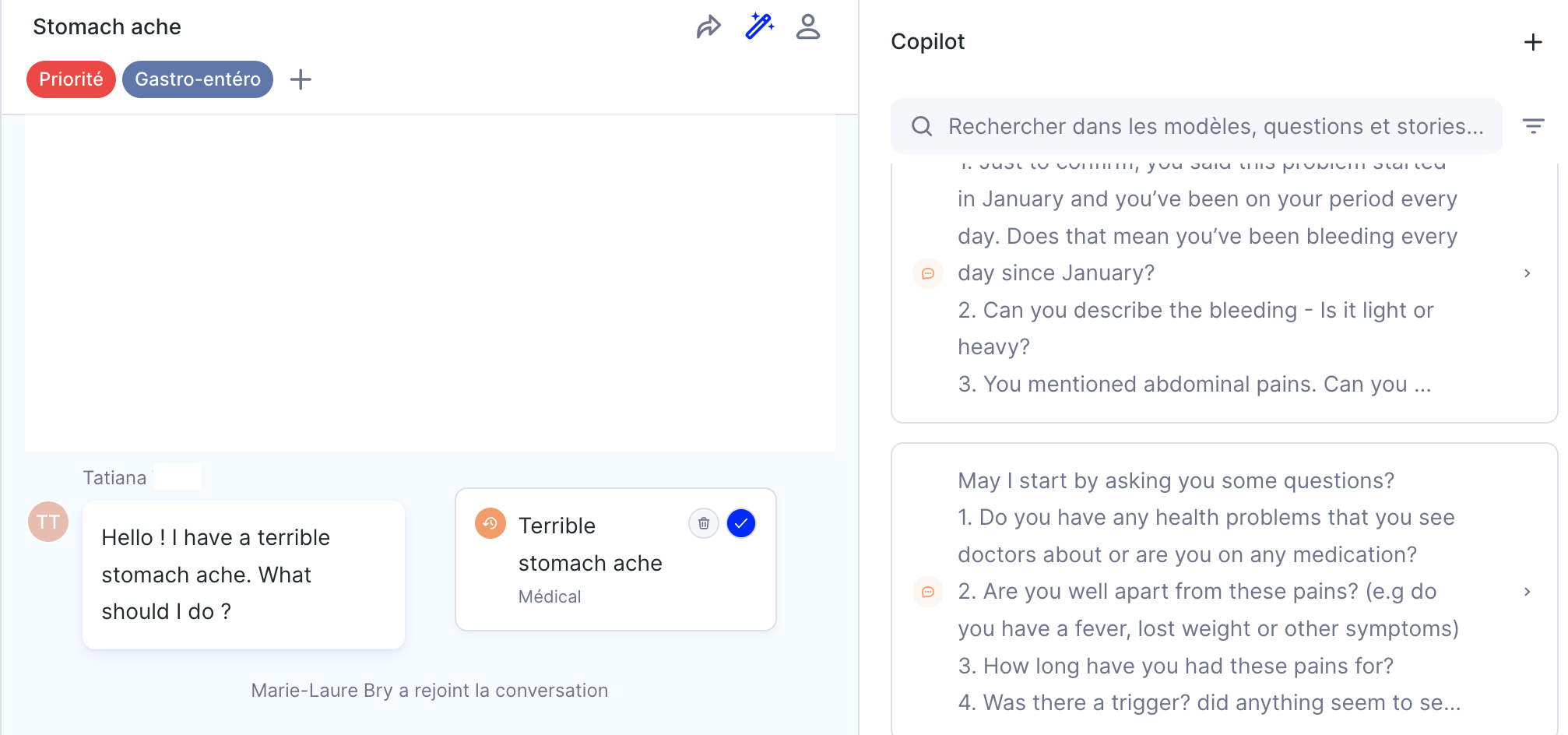
Asynchronous care is a great way to constantly increase your medical knowledge
Asynchronous care allows you to have more time. More time to research, more time to reflect on complex or unfamiliar topics, to identify issues that persist in between encounters. More time to care. You can easily review the most up-to-date treatment strategy for a condition, then reply to the patient once you've made your inquiries. You do not need to improvise as the pressure to prevent bottlenecks and waiting room saturation escalates. You can give an informed and thoughtful response.
Of course, it's never all sunshine and rainbows
Of course, asynchronous care has its limits and is not intended to become the one and only way to provide care. These limits are mainly those of written communication. Difficulties in understanding the meaning of the text, response delays when the question is asked at night, difficulties in obtaining all the necessary information quickly so that the health professional can make treatment recommendations... Asynchronous chat is not adapted to the management of vital and psychiatric emergencies for instance. In some cases, naturally, the asynchronous approach is less relevant and personalized since there is no physical examination. On top of all this, asynchronous care depends on the healthcare professional's ability to be comfortable with digital tools.
Nevertheless, technology can help mitigate these potential drawbacks. The Nabla platform is pretty intuitive: no training is required to get the hang of it. Asynchronous communication is also a habit to develop and requires to adopt a neutral, empathetic and professional tone while explaining medical terms. The automatic correction, suggested answers, and filling in features on the platform alleviate these writing challenges. Asynchronous care must be paired with empathetic technology if it is to reach its full potential.
To sum it all up
Asynchronous care changes the way we practice medicine, and for the better. Improved patient/doctor communication, efficiency and empathy gains, holistic treatment and collaboration between healthcare professionals…these are only some of the benefits I have observed while providing asynchronous care. All in all, asynchronous care is not intended to replace synchronous care, and it definitely has some limits. However, these limits can be mitigated by empathetic technology. It is meant as a powerful tool to complement in-person visits so that you as a doctor can provide better care, and become a better physician for your patients. So no, you do always need to see your patients in person to take great care of them.